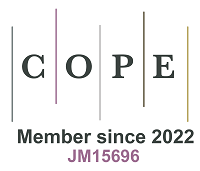REFERENCES
1. Ferlay J, Colombet M, Soerjomataram I, et al. Estimating the global cancer incidence and mortality in 2018: GLOBOCAN sources and methods. Int J Cancer 2019;144:1941-53.
2. Allemani C, Matsuda T, Di Carlo V, et al. Global surveillance of trends in cancer survival 2000–14 (CONCORD-3): analysis of individual records for 37 513 025 patients diagnosed with one of 18 cancers from 322 population-based registries in 71 countries. Lancet 2018;391:1023-75.
3. Laugsand EA, Sprangers MA, Bjordal K, Skorpen F, Kaasa S, Klepstad P. Health care providers underestimate symptom intensities of cancer patients: a multicenter European study. Health Qual Life Outcomes 2010;8:104.
4. Di Maio M, Basch E, Bryce J, Perrone F. Patient-reported outcomes in the evaluation of toxicity of anticancer treatments. Nat Rev Clin Oncol 2016;13:319-25.
5. Peeters JM, Wiegers TA, Friele RD. How technology in care at home affects patient self-care and self-management: a scoping review. Int J Environ Res Public Health 2013;10:5541-64.
6. Cajamarca G, Herskovic V, Rossel PO. Enabling older adults’ health self-management through self-report and visualization—a systematic literature review. Sensors 2020;0:4348.
7. Basch E, Deal AM, Dueck AC, et al. Overall survival results of a trial assessing patient-reported outcomes for symptom monitoring during routine cancer treatment. JAMA 2017;318:197-8.
8. Basch E. Patient-reported outcomes - harnessing patients’ voices to improve clinical care. N Engl J Med 2017;376:105-8.
9. Absolom K, Holch P, Warrington L, et al; eRAPID systemic treatment work group. Electronic patient self-Reporting of Adverse-events: Patient Information and aDvice (eRAPID): a randomised controlled trial in systemic cancer treatment. BMC Cancer 2017;17:318.
10. Basch E, Deal AM, Kris MG, et al. Symptom monitoring with patient-reported outcomes during routine cancer treatment: a randomized controlled trial. J Clin Oncol 2016;34:557-65.
11. Yang LY, Manhas DS, Howard AF, Olson RA. Patient-reported outcome use in oncology: a systematic review of the impact on patient-clinician communication. Support Care Cancer 2018;26:41-60.
12. Wong EC, Kaplan CP, Dreher N, Hwang J, Vant Veer L, Melisko ME. Integration of health questionnaire systems to facilitate supportive care services for patients at an academic breast care center. JCO Clin Cancer Inform 2018;2:1-13.
13. Matthijs de Wit L, van Uden-Kraan CF, Lissenberg-Witte BI, et al. Adoption and implementation of a web-based self-management application “Oncokompas” in routine cancer care: a national pilot study. Support Care Cancer 2019;27:2911-20.
14. Harris J, Armes J, Cheevers K, et al.
15. Ozkan B, Eskiyurt R, Oztas D. Evaluation of the Effectiveness of Web-based Intervention for Patients with Breast Cancer. Eur J Ther 2018.
16. Lucas AR, Bass MB, Rothrock NE, et al. Development of an ehealth system to capture and analyze patient sensor and self-report data: mixed-methods assessment of potential applications to improve cancer care delivery. JMIR Med Inform 2018;6:e46.
17. Sundberg K, Wengström Y, Blomberg K, Hälleberg-Nyman M, Frank C, Langius-Eklöf A. Early detection and management of symptoms using an interactive smartphone application (Interaktor) during radiotherapy for prostate cancer. Support Care Cancer 2017;25:2195-204.
18. Peltola MK, Lehikoinen JS, Sippola LT, Saarilahti K, Mäkitie AA. A novel digital patient-reported outcome platform for head and neck oncology patients-a pilot study. Clin Med Insights Ear Nose Throat 2016;9:1-6.
19. Neyja M, Mumtaz S, Huq KMS, et al.
20. Mshali H, Lemlouma T, Magoni D. Adaptive monitoring system for e-health smart homes. Pervasive Mob Comput 2018;43:1-19.
21. Kondylakis H, Bucur A, Crico C, et al. Patient empowerment for cancer patients through a novel ICT infrastructure. J Biomed Inform 2020;101:103342.
22. Gharsellaoui H, Khemaissia I, Alshahrani A. New approach for cardiac patients based on pacemaker device. J Ambient Intell Human Comput 2021:1-9.
23. Karni L, Memedi M, Kolkowska E, Klein GO. EMPARK: Internet of things for empowerment and improved treatment of patients with parkinson’s disease. International Congress of Parkinson’s Disease and Movement Disorders Hong Kong, People’s Republic of China. John Wiley & Sons; 2018.
24. Bengtsson U, Kjellgren K, Hallberg I, Lundin M, Mäitalo Å. Patient contributions during primary care consultations for hypertension after self-reporting via a mobile phone self-management support system. Scand J Prim Health Care 2018;6:70-9.
25. Laborde CR, Cenko E, Mardini MT, et al. Satisfaction, usability, and compliance with the use of smartwatches for ecological momentary assessment of knee osteoarthritis symptoms in older adults: usability study. JMIR Aging 2021;4:e24553.
26. Crespo-Lessmann A, Plaza V, González-Barcala FJ, Fernández-Sánchez T, Sastre J. Concordance of opinions between patients and physicians and their relationship with symptomatic control and future risk in patients with moderate-severe asthma. BMJ Open Respir Res 2017;4:e000189.






